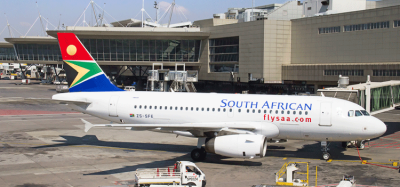Civil aviation security: Going back to basics
- Like
- Digg
- Del
- Tumblr
- VKontakte
- Buffer
- Love This
- Odnoklassniki
- Meneame
- Blogger
- Amazon
- Yahoo Mail
- Gmail
- AOL
- Newsvine
- HackerNews
- Evernote
- MySpace
- Mail.ru
- Viadeo
- Line
- Comments
- Yummly
- SMS
- Viber
- Telegram
- Subscribe
- Skype
- Facebook Messenger
- Kakao
- LiveJournal
- Yammer
- Edgar
- Fintel
- Mix
- Instapaper
- Copy Link
Posted: 2 July 2013 | Yves Duguay | 2 comments
Before investing more capital or resources into security screening, we should assess the current effectiveness and efficiency of our security systems, says aviation expert Yves Duguay…
Science and technology are pushing faster and further than ever before – particularly in the fields of security detection and automated passenger and baggage screening. I’m always amazed when I read about these new technologies and witness their demonstrations during trade shows and AVSEC conferences.
There doesn’t seem to be any limit to human ingenuity and how it is fostering advances in the field of aviation security. Innovation and the speed of technology are compounding the complexity of long-term planning for airport development and the significant investments that must accompany such projects.
It’s easy to be taken aback when we consider the costs and management implications linked to the acquisition of screening equipment by airports and screening authorities, to protect the industry, to manage growth and to remain in compliance with national, regional and international regulations – it’s certainly not an easy task!
Many are now questioning the long-term sustainability of this approach and our capacity to pay. This, in turn, has led to some introspection and subsequent initiatives piloted by ICAO, ACI, IATA and government agencies including TSA and CATSA, to develop risk-based approaches that will become foundations for the checkpoints of the future.
It may be useful for us to pause, reflect and adjust our alignment with the original objectives, which were meant to apply to every link in the security chain that binds us across the globe.
We’re all looking forward to this risk-based approach, where segmentation of passengers will form the core of our approach, however that concept of differentiation should also be considered during bilateral negotiations and international audits, as many airports may not have the means nor the traffic to invest in expensive and fast-changing technologies.
In this regard, we should always consider the basics that are found in ICAO’s annex 17, specifically in its definition of screening (article 2.5.3): “Screening: The application of technical or other means which are intended to identify and/or detect weapons, explosives or other dangerous devices, articles or substances which may be used to commit an act of unlawful interference. This objective is achieved by a combination of measures and human and material resources.
“2.5.3 Each Contracting State should employ security equipment, where appropriate, to the extent operationally, technically and financially practicable, to achieve civil aviation security objectives.”
Before investing more capital or operating resources into the field of security screening, we should assess the current effectiveness and efficiency of our security systems, especially for compliance and human performance.
As the great American guru of management sciences, Peter Drucker said: “What gets measured gets managed.” Indeed, by measuring our performance through key performance indicators linked to the effectiveness, efficiency and the service aspect of our security programs, not only can we ensure that our current resources are maximised, but we can also use the results to improve our overall performance through training and coaching, in a cycle of continuous improvement. This is truly how we can demonstrate the value we bring to the industry.
So it may be time for all us to get back to basics, reflect on our long-term approaches and put at least as much energy and innovation into managing performance as we do for the technological aspect of screening, an ideal complement to the risk-based focus for the checkpoints of the future.
Biography
Yves Duguay is the president of HCiWorld. Before launching his consulting firm, he held the position of Senior Vice-president Operations and Customer Experience at CATSA. He holds an Executive MBA from McGill University and the Hautes Études Commerciales in Montreal. He is also a graduate of the Institute of Corporate Directors.


















A friend made and interesting comment recently. He works in aircraft catering and told me his aircraft meals go through more security checks than cargo. Back in my Operations days we used to either x-ray or we’d hand search cargo if to large for x-ray. What on earth are they doing to food stuffs?
There are indeed security measures to secure catering supplies and this varies somewhat from one regulatory body to another, ranging from access control measures, to visual inspection and the application of seals (and its subsequent control). From my own experience, cargo screening measures do indeed vary due to the size and the complexity of the cargo shipments. The one thing they both share in common is the notion of supply chain security.